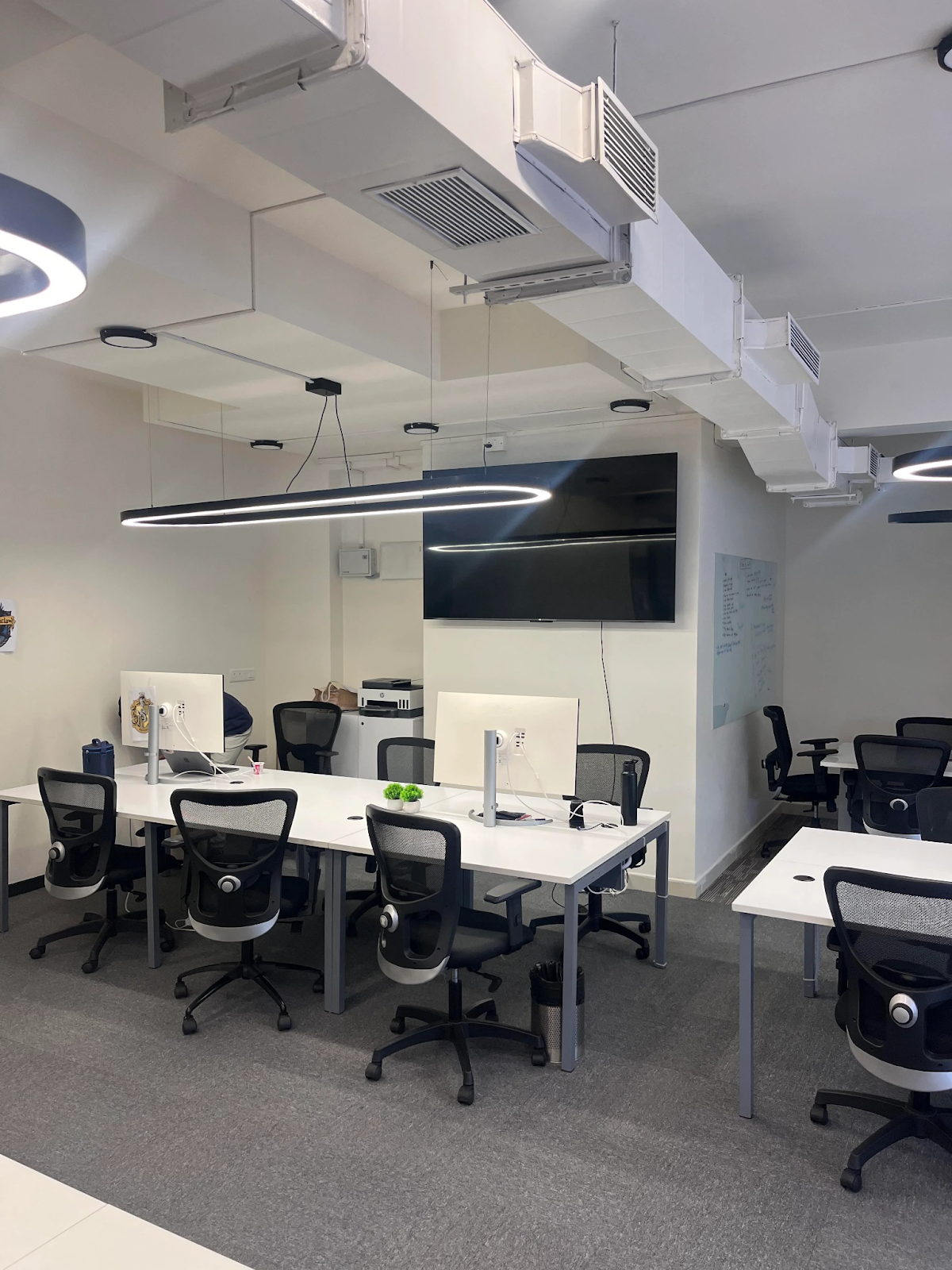The layout of your digital signage looked a whole lot different in your head. Your beautiful content was supposed to be front and center — not that mess of wires and cables. 😮💨
Awkward spaces and/or limited power sources can make it tricky to plan where your media player goes. This could lead to issues with playback and performance, and to add insult to injury, impact the aesthetic of your signage.
Is this situation annoying? Yes. Is it unfixable? No.
Here’s how to implement long-range digital signage without sacrificing its quality or ruining your sanity.
How to Cast Long-Range Digital Signage to Screens
Maybe your signage player can’t be installed in the same room as your TV, or maybe your content needs to be synced and mirrored with a screen across the room.
Either way, you’re starting to get frustrated — and you’re struggling to get your content all the way from here to there.
But take a deep breath: you’ve got a few different options.
Here are three ways to cast content to long-range screens:
1. Use a Wireless HDMI Transmitter
For setting up signage in tight or tricky areas, the easiest (and simplest) solution is to set up a wireless HDMI transmitter. You can think of these like mini radio transmitters that broadcast high-definition signals to your TVs. They’re widely available and easy to come by, especially for offices or corporate business locals.
The setup process is relatively simple: wireless transmitters plug into your screen like USB sticks. That way, you can create a cable-free setup and retrofit older screens without sacrificing your design aesthetics.
Here’s how to get started in 20 minutes or less:
- Connect your wireless transmitter to your player’s HDMI port.
- Next, plug the receiver into your TV's HDMI port.
- Now, your device will transmit data through a microwave frequency to put a high-def picture on your TV screen.
Want to learn more about the amazingness of wireless transmitters? We cover the details in this comprehensive guide.
2. Run a Long Cable
This probably wasn’t (and isn’t) your first option here, but it’s still worth considering if you’re pinched for time. It’s also one of the more cost-effective solutions — you can buy a 100-meter fiber optic cable for under $100.
It’s important to note that not all long cables make sense for digital signage. There are distance limitations that impact the quality of your signal, and if you overextend, you’ll have poorer-quality signage.
Thankfully, some dedicated folks have taken time out of their lives to calculate maximum AV signal transmission distances for various types of cables. The TL;DR is that HDMI should stay ~15 meters. If you’re spanning crazy long distances, you should invest in fiber optic.
Take a look:
Here’s how to set up long-distance cables quickly:
- First, purchase your cable. If you have a long optical HDMI cable, we recommend opting for 100 meters max. You could also opt for a long copper HDMI cable (so long as it stays ~15-meters max.
- Next, run your cables to your media player and TV screen. You can bunch your cables together and run them as a group, or tape your cables to make interesting designs. If you have to run them across the floor, tape them down or throw a rug or two over top.
- Finally, test your transmission to ensure your screen can receive high-definition images. If you don’t like what you see, try returning your cables or trying a different brand.
And voila! You’re ready to stream long-distance content via cables.
3. HDMI Over IP Hardware
If you don’t want to transmit HDMI signals using wires and cables, you could opt for a solution that encodes HDMI signals into internet protocol (IP) data.
HDMI over IP allows you to send digital signage from a player to a screen via your Ethernet switch. Then, you can decode your IP data, transform it back into HDMI, and update your displays accordingly.
Here’s a quick and simple visual of how this works:
So what makes HDMI over IP different from wireless HDMI transmitters?
Glad you asked!
- It’s fairly low-cost equipment. In other words, it’s a great option if you don’t want to break the bank (because not all wireless HDMI transmitters are easy on the wallet).
- You can tap into existing network infrastructure to send HDMI video across your office, store, or business. Might as well use your existing Ethernet/LAN ports!
- You can cover pretty dramatic distances. Every entry point between your encoder, decoder, and Ethernet switch can be 300 feet (aka 100 meters) apart.
- You can set up HDMI over IP quickly, even without a network configuration background. Trust us, it sounds a lot more complicated than it is. 😉
You’ll have lots of hardware brands to choose from based on your budget, setup, and use case. For example, the SW-120-TX3 Transmitter and RX3-100 Receiver Kit uses twisted pair cable for Ethernet (although the cable can't be used for Ethernet/LAN). You could also opt for a 4K@30Hz IP-Based KVM Extender — which not only uses existing Ethernet ports, but can transmit 4K30 at a virtually ‘unlimited’ distance.
So how do you actually break ground on this project? You’ll be happy to know it takes five minutes or less.
Here’s a high-level overview to get you started:
- First, set up the switch. To do this, connect your switch to a computer, open a web browser, and enter the IP address of the switch. This will allow you to configure your settings (like IGMP or Jumbo Frame).
- Next, it’s time to set up your transmitters, since each one will need a corresponding audiovisual (AV) source. You’ll have three options for this: buttons/dip switch, RS232 commands, and of course, remote control. We typically recommend remote control for ease and remote use (of course).
- The final step is to connect your receivers and devices. This means connecting the configured transmitter to a computer or similar device, connecting your monitor to your receiver, and all transmitters/receivers to your switch.
And with that, you’re done! You’re ready to start streaming digital signage to your monitor.
If you’d prefer a visual guide, you’re welcome to refer to the video below:
Picking the Perfect Option for Your Business
There are many different ways to transmit data at a distance. The real question is, which method makes sense for you?
For most people, the best option is to use a wireless HDMI transmitter. If you’re not sure how far of a distance you need to cover, this is a solid middle ground.
If you’re going over distances around 50 feet or less, a high-quality cable should get the job done.
But if you’re feeling really ambitious, or if you just want to test your mettle across multiple screens, HDMI over IP hardware might be your best bet.
The good news is that Fugo.ai is compatible with all of these methods. Whether you're streaming to a touchscreen kiosk or 20+ TVs, you can pair any of this hardware with our cloud-based CRM.
Want to learn more about how we can help with digital signage?





